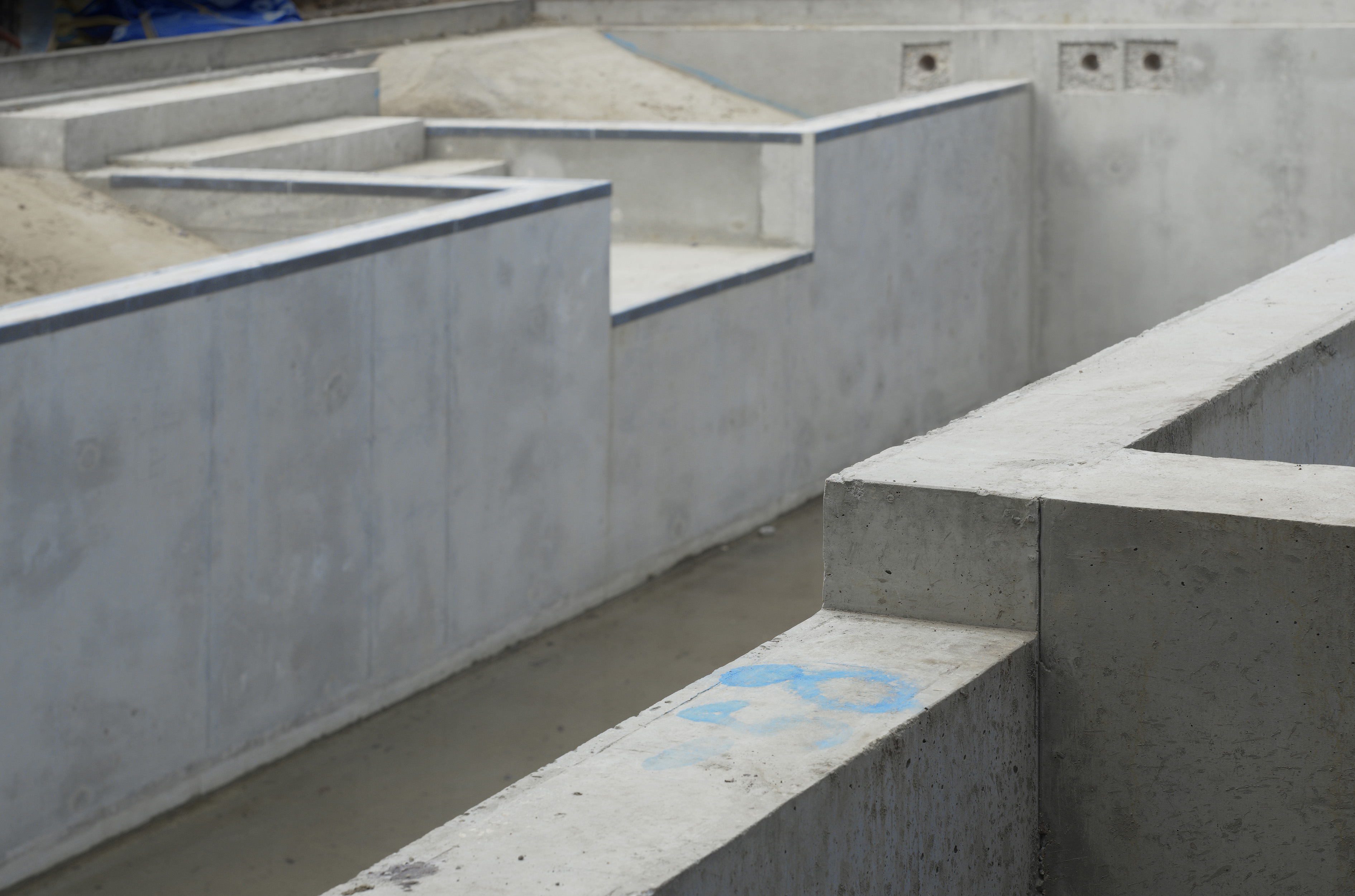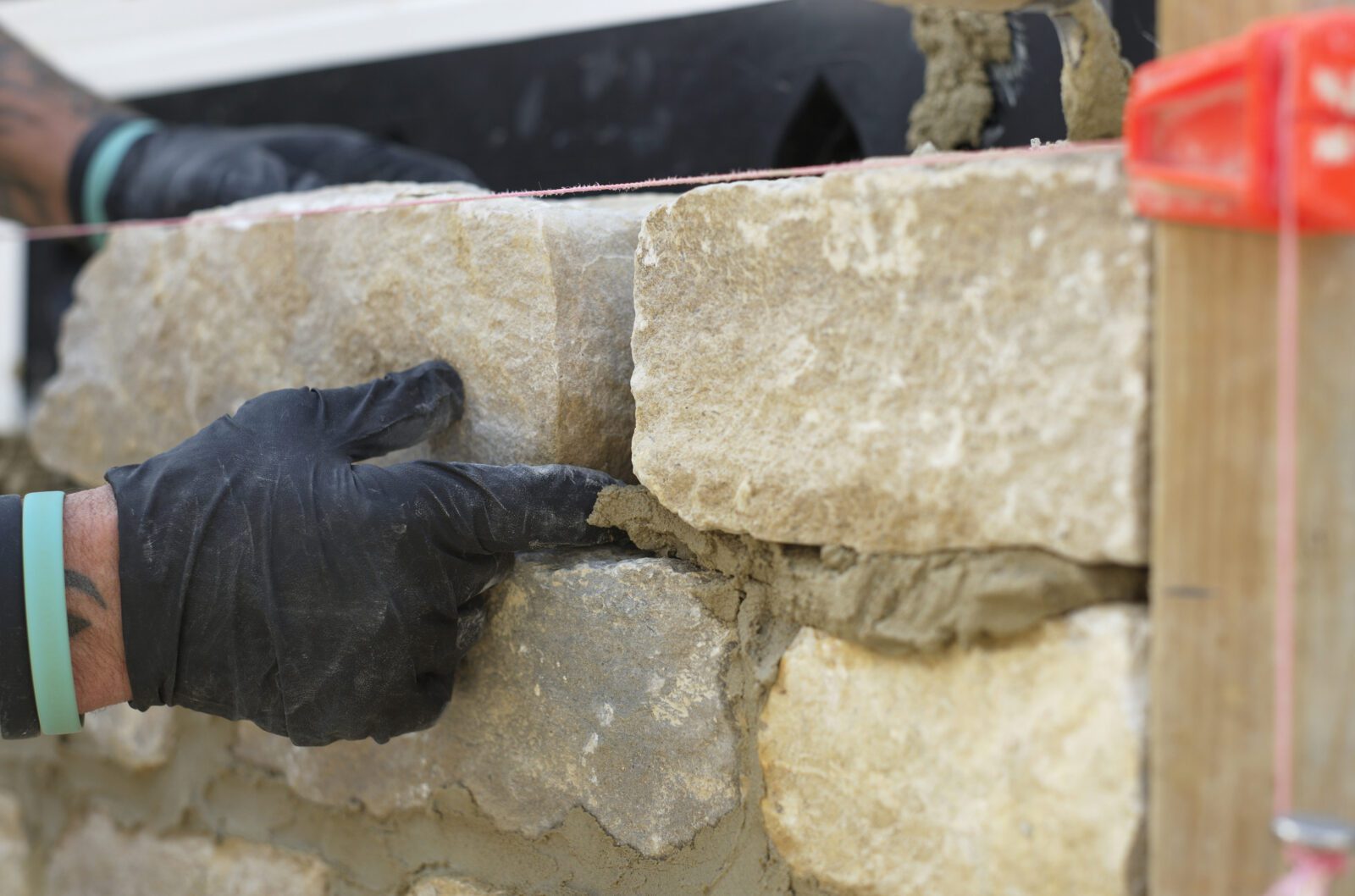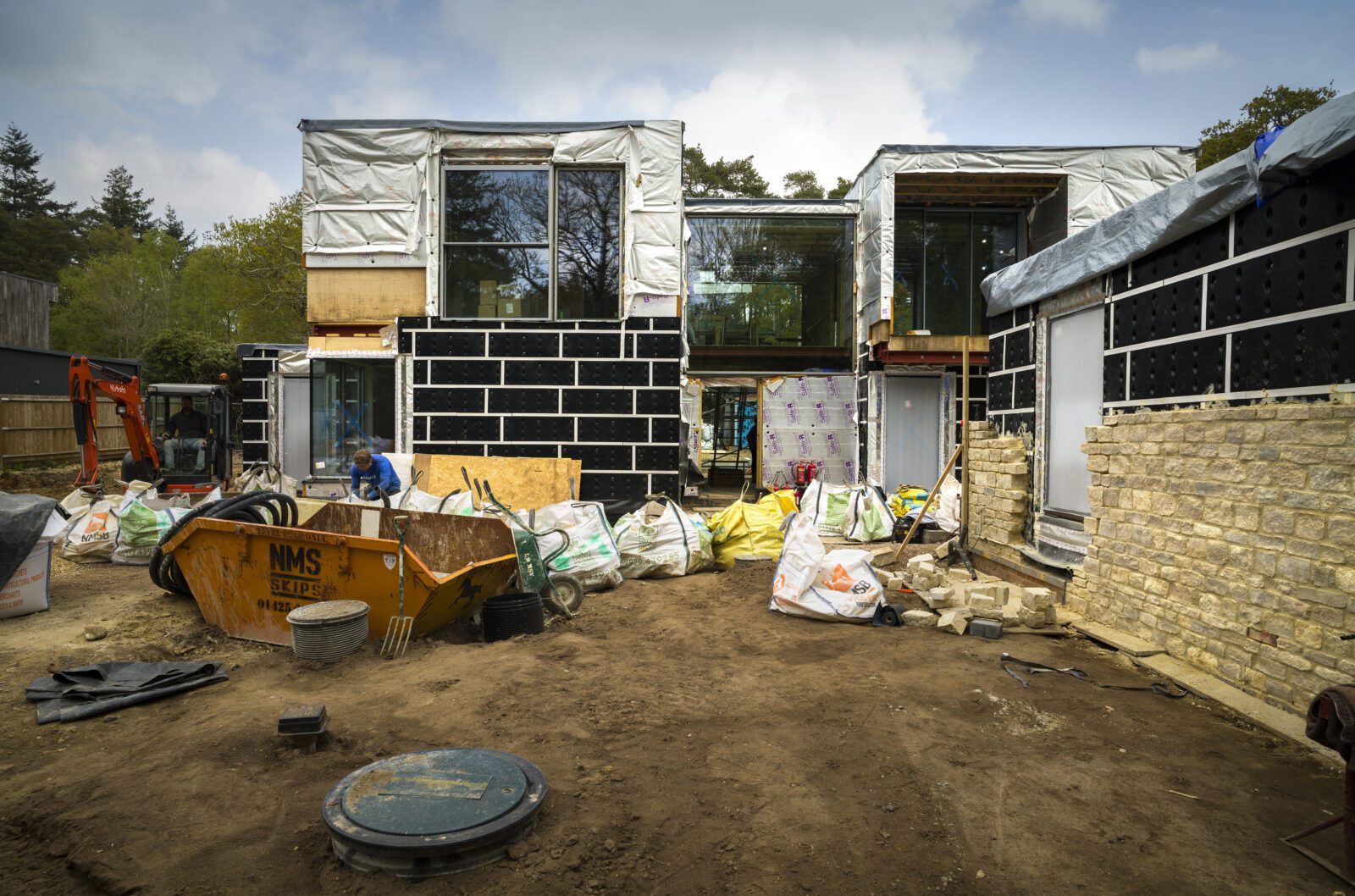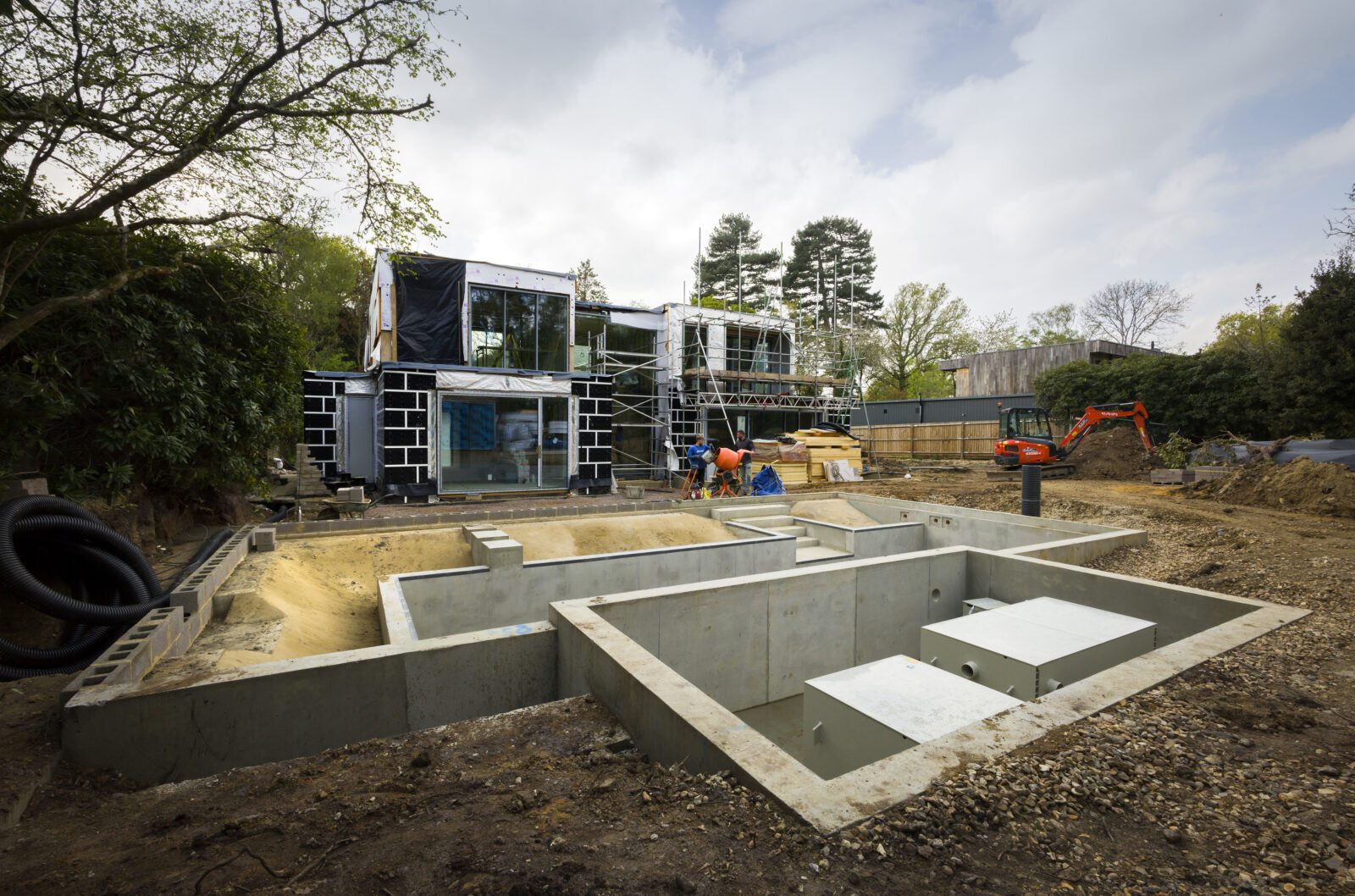Onsite; Moonstone & Lime construction progress
“Use the best possible materials, and reveal the quality of those materials and the craftsmanship of their assembly.” – Karl Friedrich Schinkel
An update of Construction progress of our Moonstone & Lime project and the rationale behind its stone envelope. PAD studio, as signatories of UK Architects Declare Climate and Biodiversity Emergency and RIBA 2030 Climate Challenge, is committed to ensuring that all projects will be designed in accordance with and evaluated against, the commitments outlined in the two initiatives.
In the design of our Moonstone and Lime project (currently on-site in the New Forest) a key criterion considered is the use of low Embodied Carbon materials. Embodied carbon is the carbon dioxide (CO₂) emissions associated with materials and construction processes throughout the whole lifecycle of a building.
Collaborating with Webb Yates engineers, an above-ground structure almost entirely of timber was designed for this ‘stone house’, despite concrete blockwork being a more standard approach. As well as being a low carbon material and offering construction efficiency, this meant we could maximise insulation levels in the wall build-up creating a house which meets RIBA 2030 targets for energy consumption with the little energy required coming largely from onsite renewable sources.
For a contemporary house designed for the future, paradoxically the building is clad in a truly historic building material – locally sourced Purbeck Limestone from Lovell Stone in Dorset. Unlike imported stone from Europe, which has a high transportation carbon impact. The stone for this project is quarried and machined in Dorset. So it is naturally very low in embodied carbon and geographically close to the project site further minimising transportation CO2 cost.
The Inventory of Embodied Carbon and Energy 2019 says ‘general stone’ has a carbon footprint of 0.079kg carbon per kg of stone. To put that into perspective that is approximately half that of Concrete (0.15kg/kg) and a quarter of steel (2.8kg/kg) (Steve Webb – RIBAJ May 2020). Stone has little lifecycle cost and the limestone quarried for this project can be reused as part of a circular design approach. At the end of the building’s life, it can be dismantled with the reclaimed stone simply being reused as part of future projects with minimal additional environmental cost.





